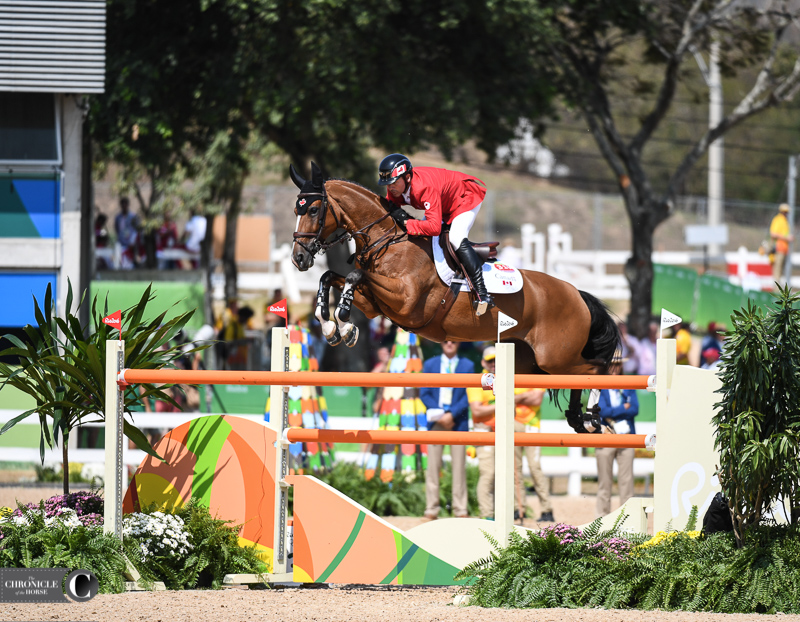Show Jumping has long been a favorite for equestrians as riders and horses race to have the fastest time jumping over 12-15 jumps in an arena. Jumping requires precision, speed, strength, and extreme balance as a horse pushes off their hind legs flying through the air, momentarily being weightless, then landing and continuing to gallop on.
Show Jumping was first introduced to the Olympics in 1900 including Grand Prix Jumping, and the High Jump. Grand Prix Jumping is similar to what we see in the Olympics today. Understanding the scoring, times, and faults, types of jumps, and who to watch will make watching the Olympics much more fun!
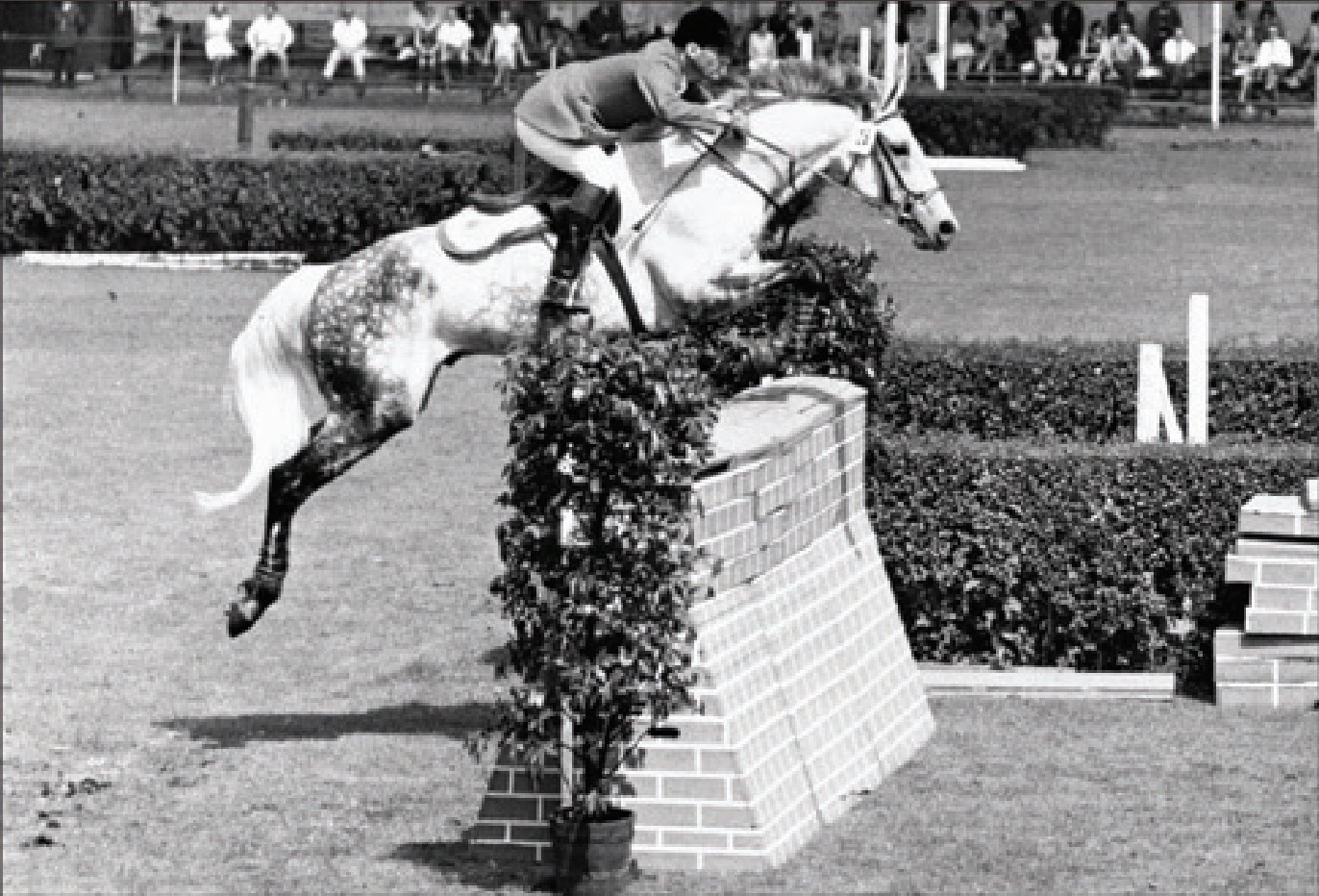
Types of Olympic Jumps
The arena will have 12-15 jumps, ranging from 1.40m to 1.65m in height.
Types of jumps include:
--Verticals: Single jump made of poles stacked, no width
--Spreads/Oxers/Triple Bars: 2 or 3 jumps placed together to add width, jumped once
--Combinations: 2 or 3 jumps placed a short distance apart, jumped with strides between each jump
--Wide water jump: 3.8 to 4.0m wide jump with water under it
--Two verticals of 1.60m
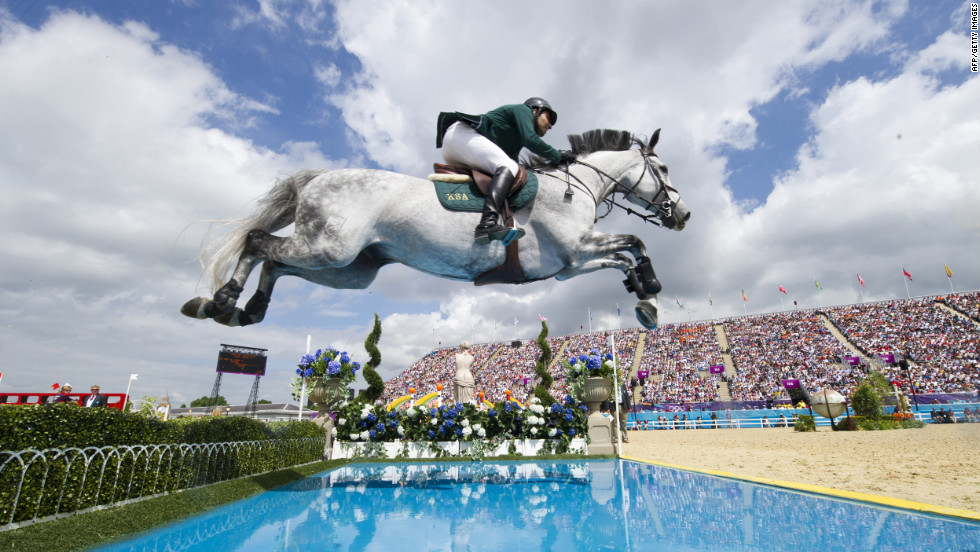
Olympic Jumping Course Design
Experienced course designer, Santiago Varela from Spain designed the Show Jumping course in the Olympics with one thing in mind, keeping it fair for the horses. “The modern horse is very clever and they are super athletes, but they need to be protected so we must build a course that they can jump well.”
Santiago thinks of the horse's canter and rhythm in relation to the ‘‘flow’ as the horse travels around the arena. He explains the importance of horse and riders evaluating the course when they see it, because every horse is different and will travel around the course differently.
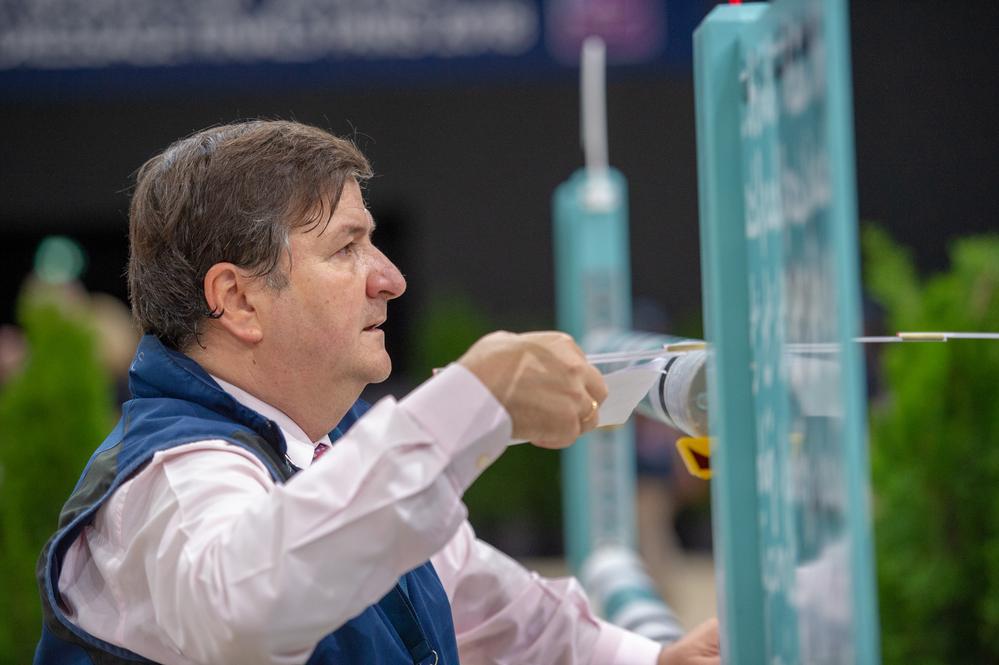
Walking the Jumping Course Before Riding It
Santiago says it’s up to the rider to help adjust the horse to the course and keep their balance. Riders are allowed to walk around the arena course on foot before riding it. Walking a course helps riders count their strides to jumps so they know how fast they need to approach the jump, and helps them memorize the course.
Santiago’s jumping courses can be seen at the August 2nd eventing jumping phase course, and the August 7th individual show jumping final course.
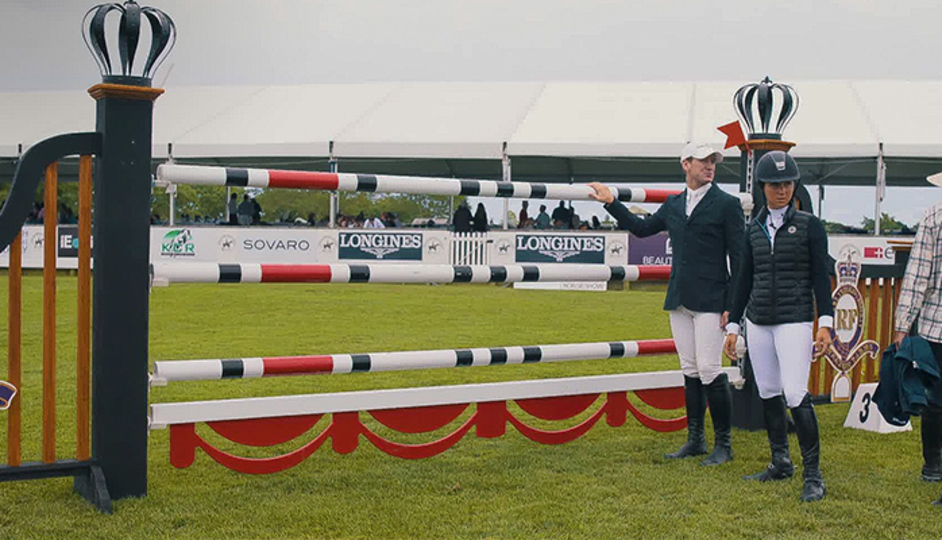
Format and Schedule of Olympic Show Jumping
At the Tokyo Olympics, there are both team and individual jumping medals awarded. There are a total of 75 horse rider combinations competing. Riders must ride the same horse in all competitions.
Schedule
-August 3rd: Individual Qualifier of 75 horse and rider combinations, no jump-off, maximum of three combinations from each country
-August 4th: Individual Final of top 30 riders, score resets to 0. Jump-off if tie
-August 5th: Rest Day
-August 6th: Team Qualifier for 20 teams of 3 horse rider combinations from each country
-August 7th: Team Final of top 10 teams, score resets to 0. Possible jump-off of all three team members if tie
How Olympic Show Jumping is Scored
Horse and rider race against the clock, avoiding receiving ‘faults’, to have the fastest time clearing all the jumps. Judges monitor the course, riders equipment, and the horses qualifications. Horses must be at least 9 years old to compete. Riders are signalled to enter the arena by a single bell ding. White and red flags mark obstacles or mandatory turns in the course.
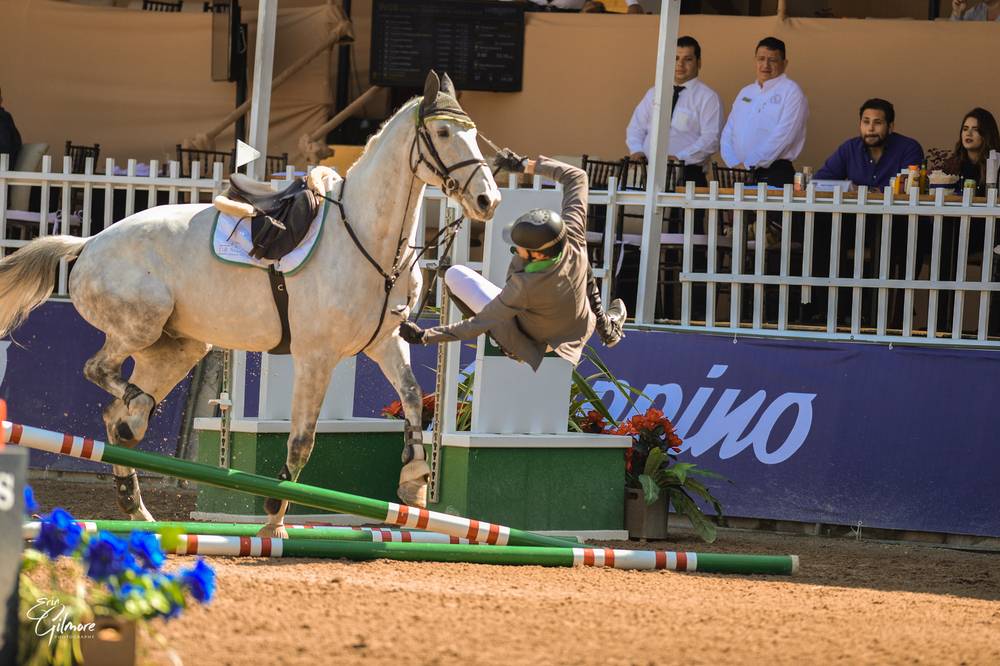
Show Jumping faults include:
--4: Knocking a jump rail or parts of a jump over
--4: Refusing a jump for the first time
--4: Landing in the water on a water jump
--1: Each 4 seconds over the allowed course time in the 1st and 2nd round, and jump-offs not against the clock
--1: Each second over the allowed course time in a jump-off against the clock
-Elimination: Refusing a jump for a second time
-Elimination: Horse or rider fall to the ground
-Elimination: Going off course
-Elimination: Over the time limit
In the past Olympics, the lowest score could be dropped, however this year riders will no longer be able to drop a score. In the past riders also carried over their scores from each round, however this Olympics each round the score will reset to 0. Team competition used to be made up of 4 horse and rider combinations from each country, however this Olympics there will only be 3 horse and rider combinations per country.
2016 Rio Olympics Individual Jumping Results
Gold: Nick Skelton from Great Britain, Final Round B Score: 0 Jump-off Score: 0
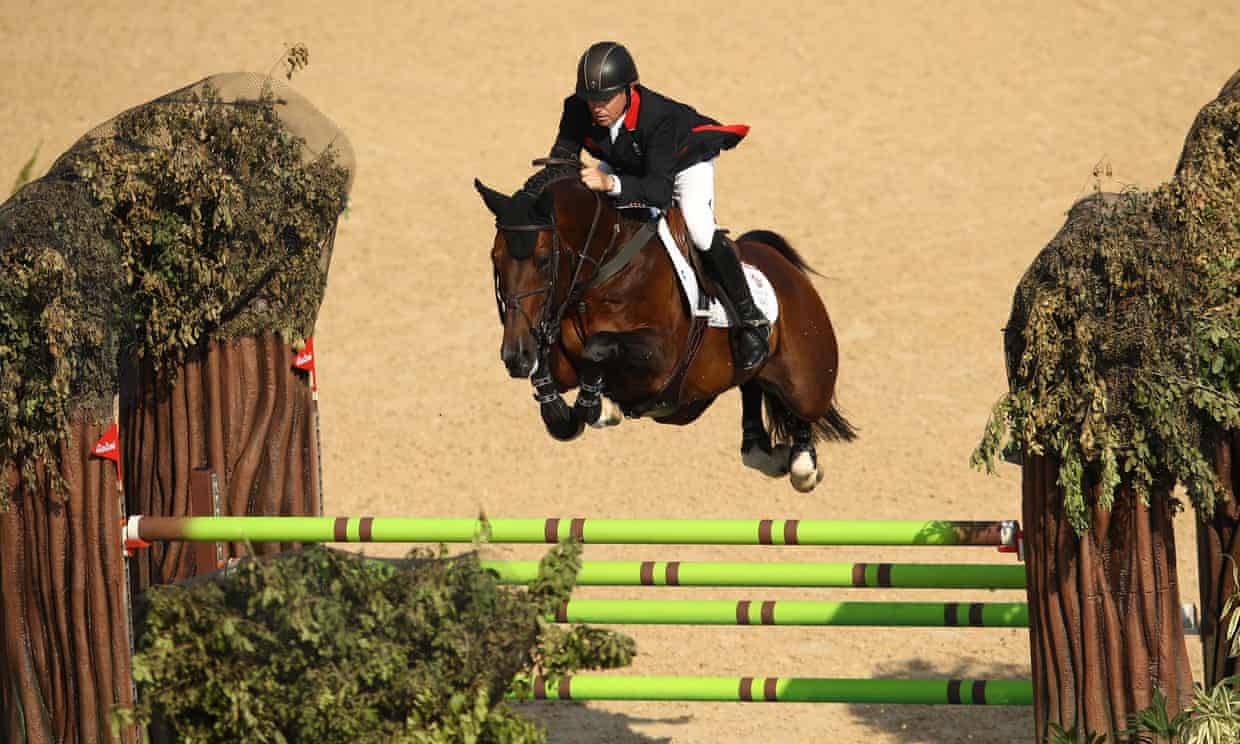
Silver: Peder Fredricscon from Sweden, 0, 0
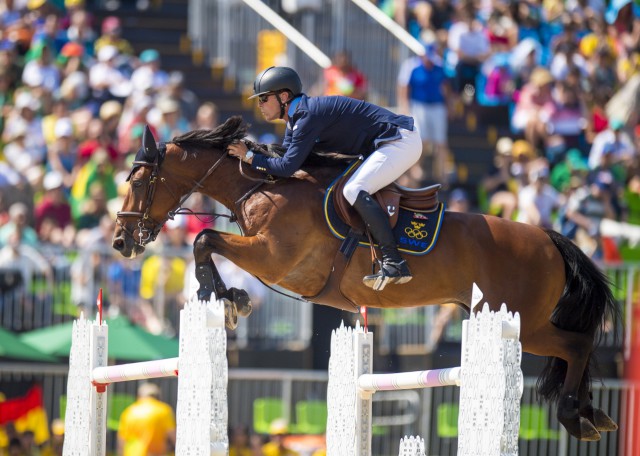
Bronze: Eric Lamaze, Canada, 0, 4
